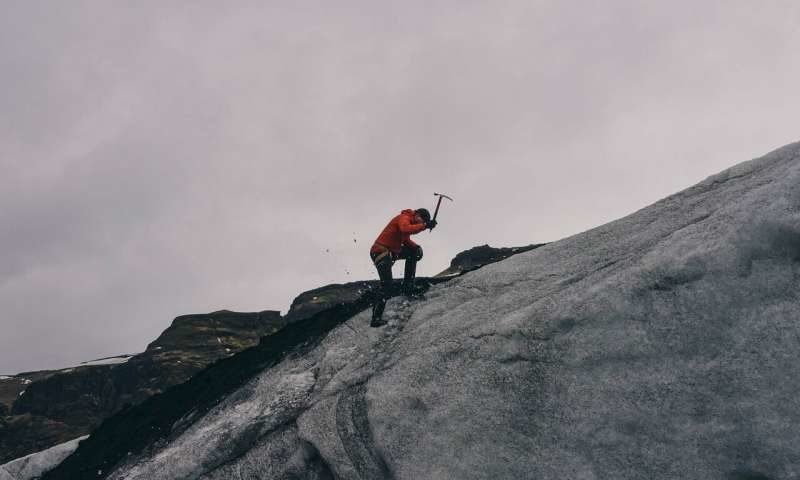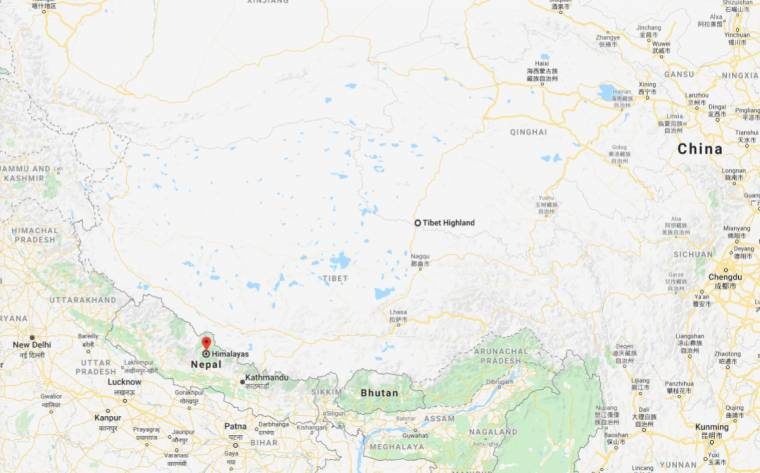Bob Yirka
Phys.orgFri, 24 Jan 2020 12:00 UTC

© CC0 Public Domain
A team of researchers from The Ohio State University and Lawrence Berkeley National Laboratory has found a host of ancient virus groups in ice cores taken from a Tibetan glacier. They have written a paper about their discovery and uploaded it to the bioRxiv preprint server.
Back in 1992, a team of researchers collected ice core samples from a glacier in the Tibetan Plateau — they calculated the ice to be approximately 15,000 years old. Some of the samples were put into cold storage for study at a later date.
Then, in 2015, another team collected ice core samples from the same glacier — they were also put into cold storage for later study. In this new effort, the researchers carried out one part of the testing planned for the cores — looking at what sort of organisms might be trapped in them.
When the two teams originally collected their
ice core samples, they did not ensure the equipment they were using would not contaminate the cores they were collecting. That meant the researchers with this new effort had to take special care to remove any contamination that had occurred during initial extraction and to make sure they did not introduce any contaminants of their own.
To ensure a pristine sample, the researchers, working in a freezer, first cut off some of the outer layer of each core
sample. Each of the samples was then washed with ethanol to melt off approximately 0.2 inches of ice. Each was then washed again with sterile water to melt off another 0.2 inches of ice. The team also created test samples by repeating the same cleaning procedure on ice cores that had first been covered with known viruses and bacteria. The samples that remained were then deemed pristine and ready for study.
A close look at the newly cleaned ice cores revealed
the presence of 33 groups of virus genera, 28 of which are not known to modern science. The researchers noted that the viruses they found in the cores from the two sites differed from one another, likely because they represented different points in time and thus differences in climate. They note that their work might grow in importance as the planet heats up due to
global warming and melts
glaciers, possibly unleashing deadly viruses.
Comment: It's interesting the viruses were noted as different possibly due to "differences in climate", one wonders what these differences were and how different?
The location is also notable, because, as detailed in
New Light on the Black Death: The Viral and Cosmic Connection:
In a letter to Lancet [1],Wickramasinghe explains that a small amount of a virus introduced into the stratosphere could make a first tentative fallout east of the great mountain range of the Himalayas, where the stratosphere is thinnest, followed by sporadic deposits in neighboring areas. Could this explain why new strains of the influenza virus that are capable of engendering epidemics, and which are caused by radical genetic mutations, usually originate in Asia? Wickramasinghe argues that if the virus is only minimally infective, the subsequent course of its global progress will depend on stratospheric transport and mixing, leading to a fallout continuing seasonally over a few years; even if all reasonable attempts are made to contain an infective spread, the appearance of new foci almost anywhere is a possibility.
And, for reference, a map showing the Himalayas (red dot) and the Tibetan Plateau:

© Google Maps
See also:

Comment: It's interesting the viruses were noted as different possibly due to "differences in climate", one wonders what these differences were and how different?
The location is also notable, because, as detailed in New Light on the Black Death: The Viral and Cosmic Connection: And, for reference, a map showing the Himalayas (red dot) and the Tibetan Plateau: